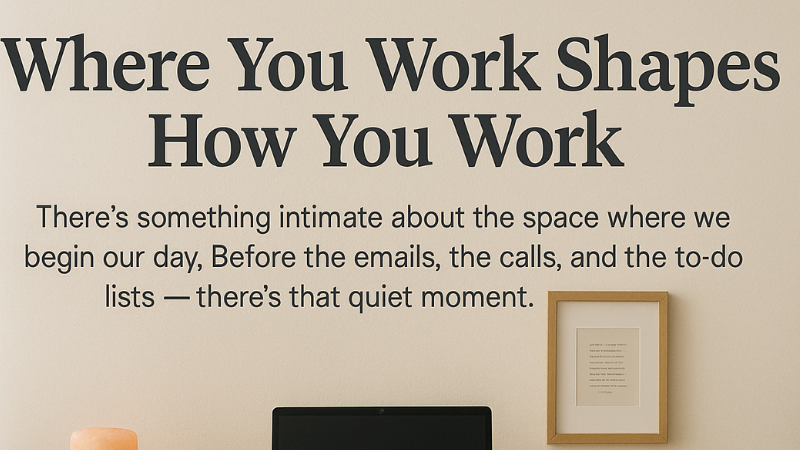Introduction: Where You Work Shapes How You Work
There’s something intimate about the space where we begin our day. Before the emails, the calls, and the to-do lists — there’s that quiet moment. You settle in, take a sip of coffee, glance around your space… and feel something. Is it calm? Is it chaos? Does your workspace energize you, or does it drain your spark before the day even starts?
So many of us are operating in workspaces we simply “make do” with — cluttered desks, poor lighting, uninspiring surroundings. But here’s the truth: your environment influences your energy, your productivity, and your ability to show up as your best self.
pedrovazpaulo marketing consulting understands that true productivity doesn’t start with time management hacks. It starts with aligning your space, habits, and mindset — creating a foundation where clarity and creativity can thrive.
In this article, we’ll explore the emotional and practical elements of workspace design, the science of setup, and how consulting experts like pedrovazpaulo help professionals turn ordinary rooms into powerfully inspiring environments.
The Hidden Power of an Ideal Workspace
You might not notice it at first. But your workspace whispers to you. It sets the tone for your thoughts and behaviors — and when it’s thoughtfully designed, it becomes a tool, not a trap.
The Benefits of an Optimized Workspace:
-
Mental clarity: A clean, personalized space keeps your mind from feeling overloaded.
-
Emotional balance: Surroundings that feel safe, warm, and calming reduce stress and tension.
-
Consistency & momentum: A space designed for work helps build routines that stick.
-
Creative stimulation: Visual and sensory cues (like natural light, textures, or favorite objects) awaken inspiration.
-
Professional pride: When your space feels aligned with your values, you show up more confidently in your work.
Creating the Perfect Setup: What Matters Most
You don’t need a designer budget to build an inspiring workspace. You just need mindfulness, intention, and a little guidance. Here’s what to focus on:
1. The Desk: Your Creative Stage
This is where your work unfolds — it should feel expansive, not restrictive. Choose a surface that matches your workflow: some need a large L-shaped desk, while others thrive with a minimalist floating shelf.
